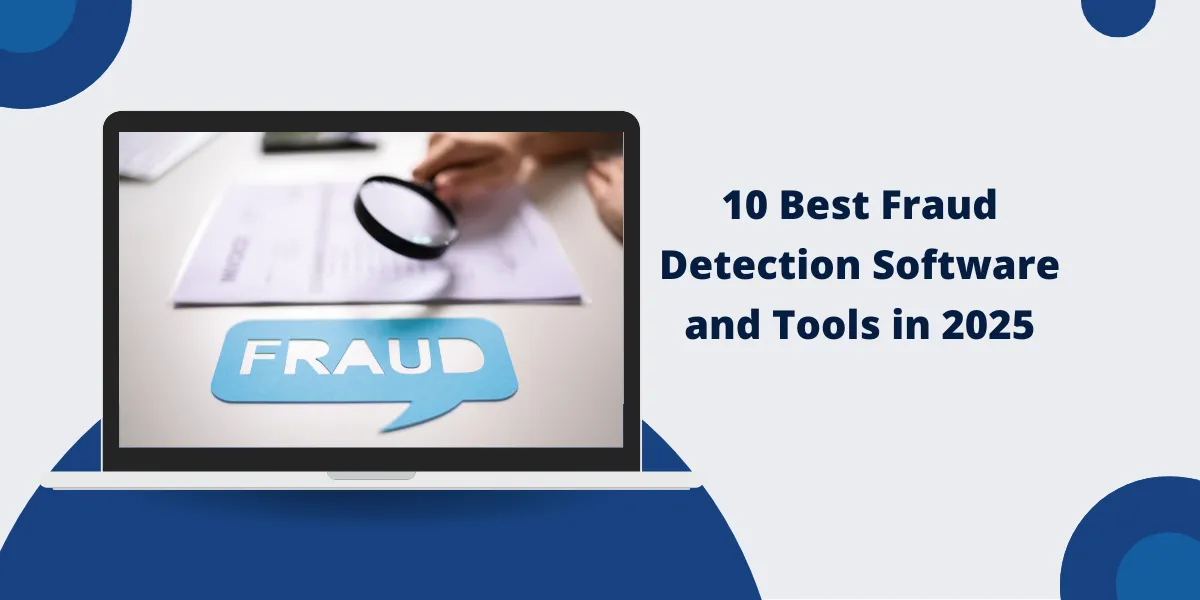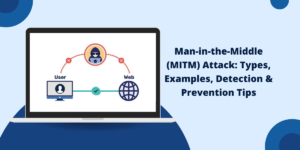What is Fraud Detection Software?
Fraud detection software is a security solution that uses advanced analytics, machine learning, and real-time monitoring to identify and prevent fraudulent activities across digital transactions and business processes. Modern fraud detection solutions analyze millions of data points in milliseconds to score transaction risk and automatically block suspicious activities.
Core Components of Fraud Detection Software
- Real-time transaction monitoring: Analyzes transactions as they occur
- Machine learning algorithms: Continuously learn from new fraud patterns
- Risk scoring engines: Assign risk scores to transactions and users
- Alert management systems: Notify security teams of suspicious activities
- Case management tools: Streamline fraud investigation workflows
Primary Use Cases
- Payment and credit card fraud prevention
- Identity theft protection
- Account takeover prevention
- Insurance fraud detection
- E-commerce transaction monitoring
Top 10 Best Fraud Detection Software Solutions
|
Solution |
Best For |
Pricing |
Key Features |
Free Trial |
|
SAS Fraud Management |
Large Enterprises |
Custom |
Real-time scoring, ML models |
Yes |
|
FICO Falcon |
Credit Card Companies |
$50K-$500K+ |
Pattern recognition, consortium data |
Contact |
|
IBM Trusteer |
Web Fraud Protection |
$10K-$100K+ |
Device intelligence, malware detection |
Yes |
|
DataVisor |
Digital Platforms |
$5K-$50K+ |
Unsupervised ML, synthetic fraud |
Yes |
|
Feedzai |
Financial Services |
$25K-$200K+ |
AI-powered, real-time decisions |
Contact |
|
Signifyd |
E-commerce |
$0.50-$2.00 per order |
Chargeback protection, guarantee |
Yes |
|
Kount |
Online Businesses |
$0.05-$0.50 per transaction |
Device fingerprinting, velocity checks |
Yes |
|
Riskified |
E-commerce |
Revenue share model |
ML-powered decisions, chargeback guarantee |
Contact |
|
Sift |
Digital Trust |
$0.05-$0.25 per event |
ML platform, abuse prevention |
Yes |
|
Simility |
Digital Commerce |
Custom |
Multi-layered ML, real-time API |
Contact |
1. SAS Fraud Management – Best Overall Fraud Detection Software
Why it’s the best fraud detection software: SAS Fraud Management combines decades of analytics expertise with cutting-edge machine learning to deliver the most comprehensive fraud prevention platform available. Used by over 300 financial institutions worldwide, it consistently achieves detection rates above 95% while maintaining false positive rates below 1%.
Key Features of SAS Fraud Management
- Real-time decision engine: Processes over 10 million transactions per hour
- Advanced machine learning: Supervised and unsupervised learning models
- Hybrid analytics: Combines rules, statistical models, and AI
- Cross-channel monitoring: Covers all payment channels and touchpoints
- Regulatory compliance: Built-in compliance for SOX, PCI DSS, and GDPR
Pricing: Custom enterprise pricing starting at $100K+ annually
Best for: Large banks, payment processors, and financial institutions
Pros: Industry-leading accuracy, comprehensive feature set, proven track record
Cons: High cost, complex implementation, requires dedicated resources
Customer Testimonial: “SAS reduced our fraud losses by 75% while improving customer experience through fewer false positives.” – Major US Bank
2. FICO Falcon – Leading Fraud Detection Software for Banks
Why banks choose FICO Falcon: As the most widely deployed fraud detection software for banks, FICO Falcon protects over 2.6 billion payment cards worldwide. Its consortium approach leverages collective intelligence from multiple financial institutions to identify emerging fraud patterns faster than isolated systems.
Key Features of FICO Falcon
- Consortium fraud intelligence: Shares anonymized fraud patterns across network
- Real-time scoring: Sub-100ms transaction decisions
- Adaptive analytics: Self-learning models that adapt to new fraud types
- Cross-channel detection: Covers cards, digital payments, and mobile
- Regulatory reporting: Automated compliance reporting for banking regulations
Pricing: Tier-based pricing from $50K to $500K+ annually
Best for: Banks, credit unions, and card issuers
Pros: Proven at scale, consortium intelligence, banking-specific features
Cons: Limited customization, primarily focused on payment fraud
Performance Metrics:
- Detection rate: 94-97%
- False positive rate: <1%
- Processing speed: <100ms per transaction
3. IBM Trusteer – Superior Web Fraud Protection
Why it excels as a fraud detector: IBM Trusteer specializes in protecting web-based transactions and preventing account takeovers. Its advanced device intelligence and malware detection capabilities make it the go-to choice for online banking and e-commerce fraud prevention.
Key Features of IBM Trusteer
- Device intelligence: Creates unique device fingerprints for fraud detection
- Malware detection: Identifies and blocks malware-infected devices
- Real-time risk assessment: Continuous session monitoring
- Behavioral analysis: Detects anomalous user behavior patterns
- Mobile app protection: SDK for mobile banking security
Pricing: Starting at $10K annually, scaling with transaction volume
Best for: Online banking, e-commerce, and digital financial services
Pros: Strong device intelligence, malware protection, easy integration
Cons: Limited to web-based fraud, requires JavaScript implementation
4. DataVisor – AI-Powered Fraud Detection Solutions
What makes DataVisor unique: DataVisor’s unsupervised machine learning approach detects unknown fraud patterns without requiring historical fraud data. This makes it particularly effective at identifying synthetic fraud and new attack vectors that traditional systems miss.
Key Features of DataVisor
- Unsupervised ML: Detects fraud without labeled training data
- Synthetic fraud detection: Identifies artificially created identities
- Real-time streaming: Processes millions of events per second
- Feature engineering: Automatically generates fraud-relevant features
- Explainable AI: Provides clear reasoning for fraud decisions
Pricing: Starting at $5K monthly, volume-based pricing
Best for: Digital platforms, fintech companies, and online marketplaces
Pros: Innovative AI approach, fast implementation, scalable architecture
Cons: Newer technology, smaller customer base, limited industry-specific features
5. Feedzai – AI-First Fraud Detection Platform
Why financial services choose Feedzai: Purpose-built for financial services, Feedzai’s AI-first approach delivers real-time fraud detection with automated decision-making capabilities. Its platform processes over 1 billion transactions annually for major banks and payment processors.
Key Features of Feedzai
- AutoML platform: Automatically builds and optimizes ML models
- Real-time decisioning: Sub-50ms transaction processing
- Visual investigation: Intuitive fraud investigation interface
- Multi-channel protection: Covers all payment channels
- Regulatory compliance: Built-in AML and KYC capabilities
Pricing: Enterprise pricing from $25K to $200K+ annually
Best for: Banks, payment processors, and financial institutions
Pros: AI-first design, fast decision-making, financial services focus
Cons: High cost, complex setup, requires AI expertise
Industry-Specific Recommendations
Best Fraud Detection Software for Banks
When selecting fraud detection software for banks, financial institutions must prioritize solutions that meet strict regulatory requirements while providing real-time transaction monitoring capabilities.
- FICO Falcon: Industry standard for card fraud detection
- SAS Fraud Management: Comprehensive banking fraud prevention
- Feedzai: Modern AI-powered platform
Banking-Specific Requirements:
- Regulatory compliance: SOX, PCI DSS, FFIEC guidelines
- Real-time processing: Handle peak transaction volumes
- Cross-channel monitoring: Cards, ACH, wire transfers, mobile
- Risk scoring: Sophisticated risk assessment algorithms
- Integration: Seamless core banking system integration
Document Fraud Detection System Integration
Modern fraud detection solutions increasingly incorporate document fraud detection system capabilities to provide comprehensive protection against identity fraud and document forgery. In addition, businesses can use secure messaging platforms like Indigitall’s WhatsApp marketing software to notify customers of verification steps, send alerts, and communicate securely, adding an extra layer of protection and trust.
Leading Document Fraud Detection Features:
- AI-powered document analysis: Detects alterations and forgeries
- Identity verification: Matches documents to biometric data
- Real-time processing: Instant document authenticity verification
- Multi-format support: Handles various document types and formats
- Compliance integration: Meets KYC and AML requirements
Best Solutions with Document Fraud Detection:
- Jumio: Specialized identity verification and document fraud detection
- Onfido: AI-powered identity verification with document analysis
- Trulioo: Global identity verification with document fraud protection
How to Choose the Right Fraud Detection Software
Decision Framework for Fraud Detection Solutions
Choosing the right fraud detection solutions requires careful evaluation of your organization’s specific needs, technical requirements, and budget constraints.
Step 1: Assess Your Fraud Risk Profile
- Transaction volume: Daily/monthly transaction counts
- Risk exposure: Types of fraud threats you face
- Regulatory requirements: Compliance obligations
- Current fraud losses: Baseline metrics for ROI calculation
Step 2: Define Technical Requirements
- Integration needs: Existing systems and APIs
- Performance requirements: Processing speed and latency
- Scalability needs: Growth projections and peak loads
- Deployment preferences: Cloud, on-premises, or hybrid
Step 3: Evaluate Vendor Capabilities
- Detection accuracy: False positive and false negative rates
- Technology approach: Rule-based, ML, or hybrid systems
- Industry expertise: Relevant experience and case studies
- Support and services: Implementation and ongoing support
Final Thoughts
Selecting the best fraud detection software requires balancing accuracy, performance, and cost considerations. Leading solutions like SAS Fraud Management and FICO Falcon excel for enterprise needs, while emerging platforms like DataVisor offer innovative AI approaches. Fraud detection software for banks should prioritize regulatory compliance and real-time processing capabilities.
Success depends on choosing solutions that integrate seamlessly with existing systems and provide measurable ROI through reduced fraud losses and improved operational efficiency.
Frequently Asked Questions (FAQs)
What is the best software for fraud detection?
The top fraud detection software in 2025 includes Kount, Signifyd, and Stripe Radar. These tools use AI and machine learning to analyze transactions in real-time. They detect suspicious patterns and prevent financial fraud with high accuracy rates.
How much does fraud detection software cost?
Fraud detection software prices range from $50 to $1000 per month for small businesses. Enterprise solutions cost between $1000 to $5000 monthly. Most providers offer custom pricing based on transaction volume and features needed.
What features should good fraud detection software have?
Good fraud detection software must include real-time monitoring, IP address tracking, and device fingerprinting. The software should provide automated alerts, detailed reporting, and machine learning capabilities. Integration with payment systems is essential for effective fraud prevention.
Can fraud detection software work with existing payment systems?
Most fraud detection software integrates with common payment platforms like PayPal, Stripe, and Square. These tools connect through APIs and work alongside existing payment infrastructure. Setup typically takes 1-2 business days.
How effective is AI-based fraud detection software?
AI-based fraud detection software has a 95-99% accuracy rate in identifying suspicious transactions. These systems process millions of data points per second. Machine learning models improve detection rates over time through continuous learning.

Priya Mervana
 Verified Web Security Experts
Verified Web Security Experts
Priya Mervana is working at SSLInsights.com as a web security expert with over 10 years of experience writing about encryption, SSL certificates, and online privacy. She aims to make complex security topics easily understandable for everyday internet users.



